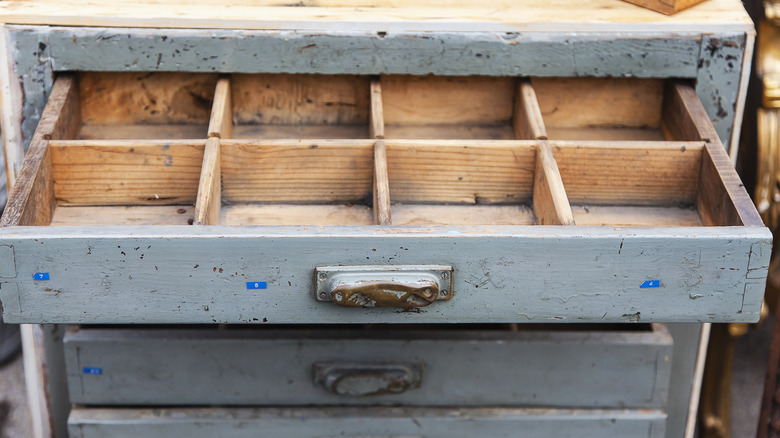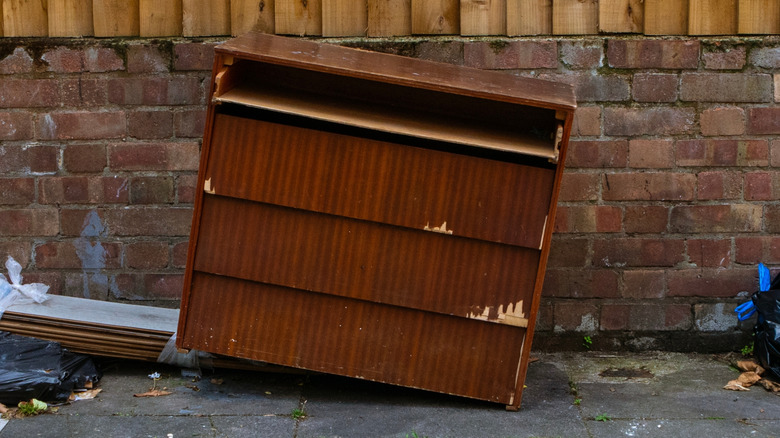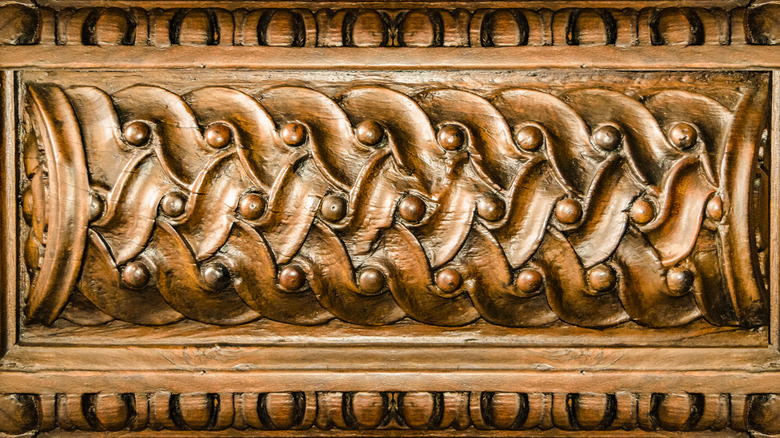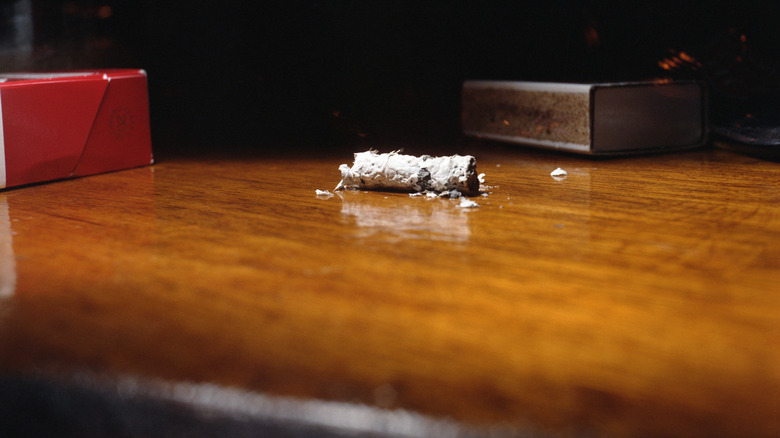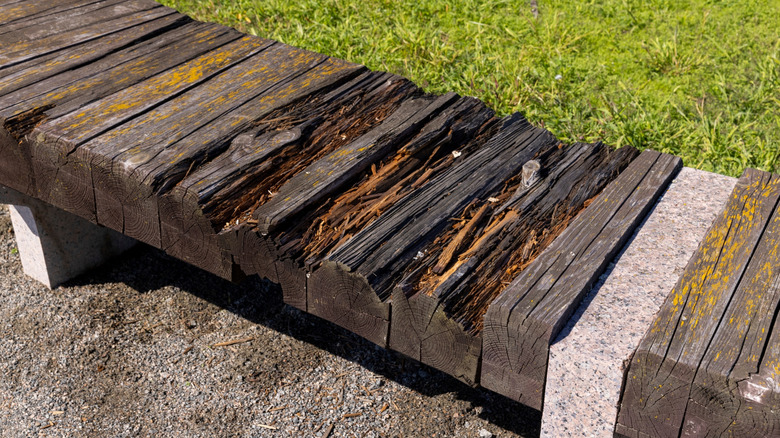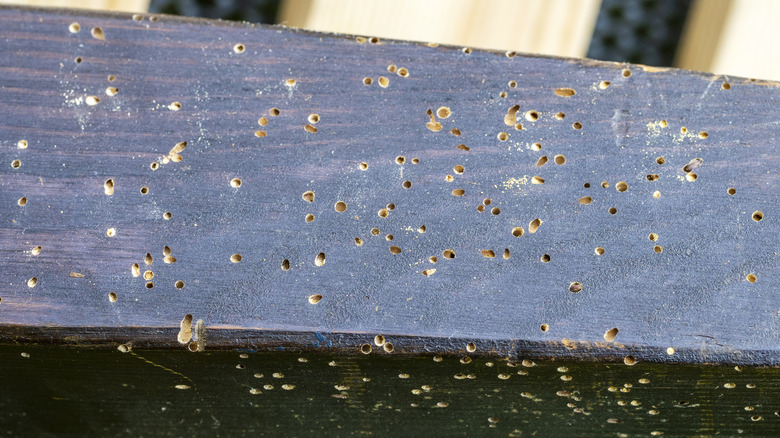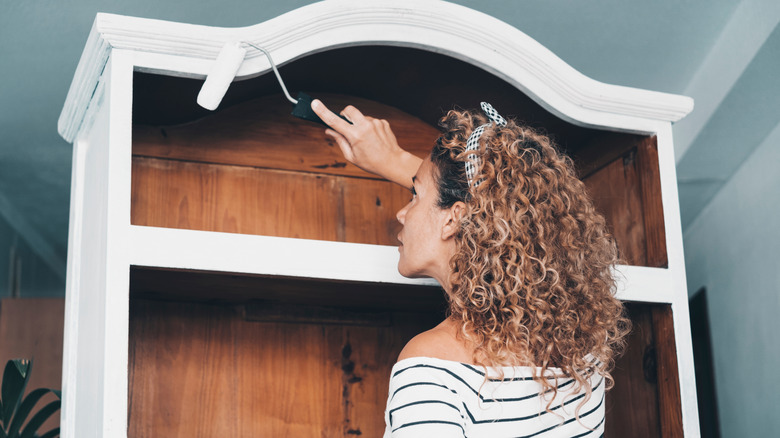6 Signs That A Worn-Out Furniture Piece Isn't Worth Upcycling
We may receive a commission on purchases made from links.
There are few things more satisfying than taking an old, unloved furniture like old nightstands and bringing them back to a useful new life. Upcycling, especially when thought of in terms of furniture, means taking an old piece of furniture, fixing it up a bit. It may mean replacing a part, screwing pieces back together, or sprucing up its appearance with paint. Either way, you'll be keeping it out of the landfill and enriching your life (or someone else's) with the "new and beautiful" table, chest of drawers, or similar household staple. Not only is upcycling fun and practical, but it helps the environment and conserves resources.
There is a point, however, when upcycling is no longer a worthy option. A good question to ask is: what are the signs that a worn-out piece of furniture is not worth upcycling? Of course, you may disagree with the suggestions. One person's trash is another person's treasure, and to use another worn-out bromide, beauty is in the eye of the beholder. That makes the choice an entirely personal decision. Consider the smell of the wood, appearance, missing parts, condition of the wood, and your personal energy level.
But how do you decide one way or the other as you sit in your car, looking at a discarded piece of furniture sitting on someone's corner? Is it worth the time and effort? Are you up to the construction challenges? Do you have a place to put it? If you get it home and decide it's not worth it, what are you going to do with it? At the end of the day, only you can answer those questions.
Are there enough parts to make it work?
If a piece of furniture is missing more pieces than it retains, chances are, it's not worth the effort. There may be times when, for instance, a chest of drawers is missing all the drawers, but you simply want to add shelves inside — that still works. But you need to ask yourself if the rest of the pieces hold together. Are the joints loose and interior braces missing? This is a place to consider your woodworking skills. It's not terribly hard to add screws to your piece to make sure it is structurally sound. Adding a stretcher or apron to repair your furniture is not a task beyond the skill of a regular DIYer. It is one of the basic tasks of upcycling.
Adding these parts and making them look like they belong easier if your upcycling plan includes painting the piece. That will make blending in the new parts or hiding the additional screws or nails much easier. Are you up for that challenge? If not, you may want to reconsider this particular upcycle project.
This applies to drawer parts too. Often drawers are pieces of wooden furniture that get the most use and begin to fall apart. Some glue and screws can save those drawers and if you have painted them, and no one will see your repairs. But some furniture is just too broken to repair. It's your call, but if a piece is too flimsy to be put back together, it's a sign to give it a pass.
Are there special decorative parts missing?
For some special pieces of furniture, see if any decorative parts are missing. If there are supposed to be two fancy corbels, but only one remains, can you find similar corbels to purchase, or find them on another distressed piece of furniture? Chipped wood furniture can be fixed, but if the veneer is totally gone, cracked, or very loose, it's difficult to repair. Usually, it requires removing all the veneer and painting those sections. Consider the time and effort that will require. Small cracks and chips are much easier to fix with wood putties and fillers.
Decorative moldings, however, are often the focal point of classic furniture. While there are a wide variety of moldings available for purchase today, if that's missing on the piece you want to upcycle, you'll need to find and replace the matching molding, or remove it altogether. You could try to create it yourself, but many may find that difficult. If you simply remove all the molding and leave it plain, it might take away from the piece altogether.
You'll need to decide how to approach these problems and whether the fix is worth the work. If one leg of a dresser or table is missing, you could take off the other legs and replace them with something else, but it may be more work than it's worth. Solving these sorts of challenges make upcycling fun and satisfying. Creative solutions for tricky problems are just part of the process, but it is wise to have a plan before you commit. Not every piece of furniture can be saved.
Use your nose to know if furniture can be saved
A huge red flag that a piece can't be upcycled is its odor. Some bad smells like mildew can be eliminated by cleaning it them basic household products and water, as well as sealing the wooden surface with shellac. Clean the entire piece, and once it is dry, apply a coat of shellac-based sealer.
Others odors are much tougher to remove. Removing smoke smell is very hard in furniture. Some products, like Stink Solution smoke odor eliminator spray, may help. Another option is to create a mixture of vinegar and ammonia to clean the piece, but it may not work. If you want to try, only do this in a well-ventilated area and be sure to use rubber gloves and eye protection. These have their own strong odors, but they can be removed with a final washing with soap and water.
It is important to deal with these odors before you try to upcycle your furniture piece. If the odors prove to be too stubborn and can't be completely removed, that is a stopper, and you need to know it early. For many upcyclers, odor is a top reason why they will pass on a recycling opportunity. If it's the only problem with a piece of furniture, it may not be a dealbreaker. But if you have odor removal as only one task among many, you may want to skip the project.
What is the condition of the wood itself?
Another thing to look for is mold and rot. Mold is very difficult to kill and remove. Even with your best efforts, you can often only kill the surface mold, and that means it will return in time. That's because mold, especially on wooden surfaces, penetrates down into the wood fibers well below the surface. Cleaning agents like bleach will kill and clean the surface of the wood, but not down deep. Cleaners like vinegar may do better, but the best advice is to not bring a moldy piece into your house. You do not want the mold spores to spread into your home and get into your walls or other pieces of furniture.
Dry rot looks similar to mold, but is different. Rotting occurs when bacteria, rather than spores, gets into the wood fibers and eats away at the structure of the wood, leaving a weak, punky area. The fibers of the wood no longer have the strength to perform their functions. Sometimes the rot will look dark, and other times it will be very light-colored.
You can check for rot using an awl or small screwdriver, pushing them into the concerning area. If they push in easily, you have a problem. Some products, liked Bondo rotted wood restorer, can be poured onto a rotted area, which will then harden and repair the area. You can fix small, rotted areas, but too much rot is another sign to pass on the piece. The multiple repair products can get expensive and there comes a point where it no longer makes sense.
Don't bring bugs home with you
Insects can occasionally infest old furniture. Termites and carpenter ants chew into wood fibers and wreak havoc. If you bring a piece of furniture home with those critters, they may spread to other areas in your home. While some insects are regional, like termites, there are wood-eating insects in nearly every area of the country. Woodworms (often insect larva) are another thing to look for. The types of damage they create are identifiable to each pest, but they all leave holes and destroy wood. Look for that kind of damage, and avoid affected furniture unless you can be sure the infestation is no longer active.
Upholstery and fabric, meanwhile, are places that bedbugs hide. Bedbugs are a huge problem in part because once they are established, they are tremendously hard to eliminate. They can be common in apartments and in facilities caring for the elderly. They bite people, which is gross, and worse, some folks react strongly to the bites. Insecticides have limited effect on them, with intensive heat treatments being the preferred method for killing them. For those reason, many people have a hard and fast rule to forgo upcycling upholstered furniture. Pest-infested furniture can be treated and the bugs killed, but sometimes that treatment is not 100% effective. Bug infestation is a strong sign that the furniture piece is not worth upcycling.
Do you have the time, space, and energy?
Logically, a single one of the issues raised above may not be a stopper, or even a big deal. But if several of them are combined — it may be. Which brings up some very basic considerations for you to address. First, do you have the time to take on the project, and with that, are you willing to expend the effort it will require? Determining the time and effort required is not an exact science, but taking the time to consider them is important. Second, do you have the space to do the work in and the storage space to accommodate it?
Remember, you will likely have parts and pieces spread out as you work. Will your car need to move outside the garage for the duration? Do you have access to the tools you will need? Do you own them or are they available to borrow? If not, make a plan to pick them up. And lastly, do you have the skills needed to do the job? Skills can be learned, and for most of us, that is part of the fun of upcycling. But learning new skills adds to the overall time consideration. Upcycling is fun and enriching, but take a few minutes to consider these warning signs. They may save you from starting a great project that later turns into trouble.
